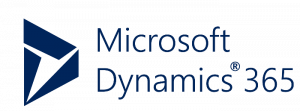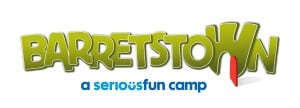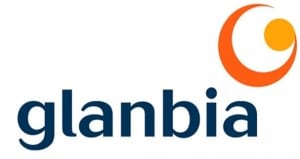
Worried that your ERP System is Outdated?
If you’re reading this, chances are your organisation already integrates an Enterprise Resource Planning (ERP) platform into its operations. You may recall the dark days from before your ERP system was implemented when even the simplest of tasks would be hindered by needless complexity and the value of critical business data, locked away in disparate data siloes across multiple applications, couldn’t be utilised.
You probably remember the jump in performance during the months and years after the system was introduced. The proper integration of an ERP system allows organisations to adopt new business strategies that were previously simply unviable.
Enough preaching to the choir. You love your ERP system and are well aware of the benefits it has brought to your organisation. But it could be better. Here are 5 signs that your ERP system is outdated.
Is Good Enough enough?
After years of operating within an ERP system with no glaring complaints to report, it’s easy to fall into the good enough mindset. This is predicated on the idea that so long as business operations continue as normal, nothing is amiss. In other words, “if it ain’t broke don’t fix it”.
Even if some faults or inefficiencies are observed, its common for organisations to become complacent; accepting these faults as “features” and adapting organisational processes to suit the constraints of the system. If an organisation is content with stagnant innovation and inability to respond dynamically to external pressures, then by all means, good enough is enough.
Double-Entry Creep
A primary reason why organisations will adopt an ERP system in the first place is to eliminate additional manual data-entry work from the data management process. This may indeed have been the reality when the system was first implemented. Over time, as processes evolve, the ERP system can gradually, almost imperceptibly, fail to keep pace with requirements.
This can frequently be seen in finance teams who may need to add extra steps to their workflow in the form of manually reconciling bank statements and sharing invoice data. Modern ERP technology is fully capable of streamlining these efforts. If the system in place in your organisation doesn’t offer this it’s a sign that the ERP system is outdated.
Lack of real-time data availability
The ERP platforms of today support access to real-time, granular data. The quicker data can be accessed and compiled, the faster that decisions can be made, which offers inherent business advantages. Many outdated legacy ERP systems in use today do not support this function. Modern systems support real-time reporting, even on mobile devices, to provide key data wherever and whenever it’s needed.
The System isn’t User-Friendly
An organisation’s ERP system represents the backbone of the business applications used by workers to perform their daily tasks. As such, training new people on the system is a central part of the onboarding process. Given how integral the ERP system is to an organisation, it’s typical for places to stay with the same system for a long time. Indeed, it’s not unheard of for organisations to still be using the same system they first implemented 15+ years ago. While the system may still be good enough to get the job done, odds are that the interface itself is more than showing its age.
Developed using design principles of the early-mid 2000s, these antiquated systems can seem alien to new employees, particularly younger people who grew up in the age of integrated, user-friendly applications. Not only does this make the onboarding process more laborious than it needs to be, but it also increases the likelihood that new employees won’t use the full suite of tools that the system has to offer.
As time passes and these same employees find themselves on the other side of the onboarding process they could pass on their learned bad habits to the next generation, continuing the cycle. While a system that is 15 years+ old may do a good enough job, provided that all functions are maximally utilised, as a gradual decay in ERP literacy occurs organisations will find themselves even further behind the curve.
An outdated ERP System is Difficult to Update
Older, on-premise legacy ERP systems have a reputation for being burdensome, code-heavy behemoths that lack modular adaptability and are very challenging to update. In some instances, they may be so complex that an organisation’s in-house IT team won’t even attempt to update them for fear of breaking the system.
This is a genuine concern, as a situation could arise where the IT team finds themselves scrambling to undo their damage, often on systems that are no longer supported by the manufacturer. Now the narrative becomes “if it ain’t completely broke, please don’t even try to fix it!”.
This leads to massive opportunity costs with organisations incapable of integrating the latest performance-boosting work applications or adopt new technologies, such as Artificial Intelligence (AI) and Internet of Things (IoT), into their strategic business processes.
 Microsoft Dynamics 365 Business Central (BC) is a cloud-based ERP platform designed to allow you to run your organisation from a single unified solution. Unlike some other offerings in the market, Dynamics 365 BC is an ERP system which incorporates enhanced CRM capabilities, allowing you to boost sales and improve the buying experience for your customers in the very same platform used to manage supply chains, financials and more.
Microsoft Dynamics 365 Business Central (BC) is a cloud-based ERP platform designed to allow you to run your organisation from a single unified solution. Unlike some other offerings in the market, Dynamics 365 BC is an ERP system which incorporates enhanced CRM capabilities, allowing you to boost sales and improve the buying experience for your customers in the very same platform used to manage supply chains, financials and more.
In a nutshell, it offers a comprehensive all-in-one management platform to help maximize every facet of your business. Because Dynamics 365 BC is cloud based, your organisation always has access to the very latest productivity-enhancing innovations. Built on industry leading Microsoft architecture, Dynamics 365 BC offers a smooth and intuitive user interface that will already seem familiar to your team.
Click here to get your free Microsoft Dynamics 365 BC capability guide. Or, if you would like to speak with one of our Business Solutions experts don’t hesitate to leave your details below to get a free no-commitment call back from a member of the team.
Follow us on Twitter and LinkedIn for more updates.
Register for upcoming events
-
 "At Barretstown, we rebuild the lives of children, and their families, affected by childhood cancer and other serious illnesses. We serve 5,000 campers a year and have 1200 volunteers each year. Communication is crucially important and Datapac has helped us to streamline, improve and ensure efficiency."
"At Barretstown, we rebuild the lives of children, and their families, affected by childhood cancer and other serious illnesses. We serve 5,000 campers a year and have 1200 volunteers each year. Communication is crucially important and Datapac has helped us to streamline, improve and ensure efficiency." -
 "Datapac has provided us with a fantastic product and world-class levels of service and support. Whenever people ask me about our experience with Datapac I’m always ready to sing their praises and I would happily recommend their services to any organisation."
"Datapac has provided us with a fantastic product and world-class levels of service and support. Whenever people ask me about our experience with Datapac I’m always ready to sing their praises and I would happily recommend their services to any organisation." -
 "For many years Datapac has been our sole supplier for the maintenance of Personal Computers and Peripherals in Ireland. Through their Service Centres in Wexford and Dublin, Datapac provides excellent support to our businesses throughout the country and consistently meets the SLA targets which we have set. The skill, expertise and experience of their engineers and other technical support personnel are of the highest standard."
"For many years Datapac has been our sole supplier for the maintenance of Personal Computers and Peripherals in Ireland. Through their Service Centres in Wexford and Dublin, Datapac provides excellent support to our businesses throughout the country and consistently meets the SLA targets which we have set. The skill, expertise and experience of their engineers and other technical support personnel are of the highest standard." -
 “The value of dealing with an HP Gold partner in this process can’t be underestimated. Datapac provide us with a local touch and can cover the full range of our IT requirements, but when there is a specific technical requirement like this, they can bring the specialist technical resources of HP to the table. HP and Datapac had a thorough discussion with us around our requirement - and had really done their homework - and then were able to provide us with a very highly specified test platform for us to prove the application on before we committed to purchase.”
“The value of dealing with an HP Gold partner in this process can’t be underestimated. Datapac provide us with a local touch and can cover the full range of our IT requirements, but when there is a specific technical requirement like this, they can bring the specialist technical resources of HP to the table. HP and Datapac had a thorough discussion with us around our requirement - and had really done their homework - and then were able to provide us with a very highly specified test platform for us to prove the application on before we committed to purchase.” -
 Datapac understands our needs and requirements and has the expertise and experience to follow through on all our requests. Our constant need to reduce costs has been assisted by Datapac's ability to suggest alternative solutions and methods whilst improving both efficiency and productivity. Our partnership with Datapac is akin to having an IT department on site that we simply could not provide ourselves.
Datapac understands our needs and requirements and has the expertise and experience to follow through on all our requests. Our constant need to reduce costs has been assisted by Datapac's ability to suggest alternative solutions and methods whilst improving both efficiency and productivity. Our partnership with Datapac is akin to having an IT department on site that we simply could not provide ourselves.